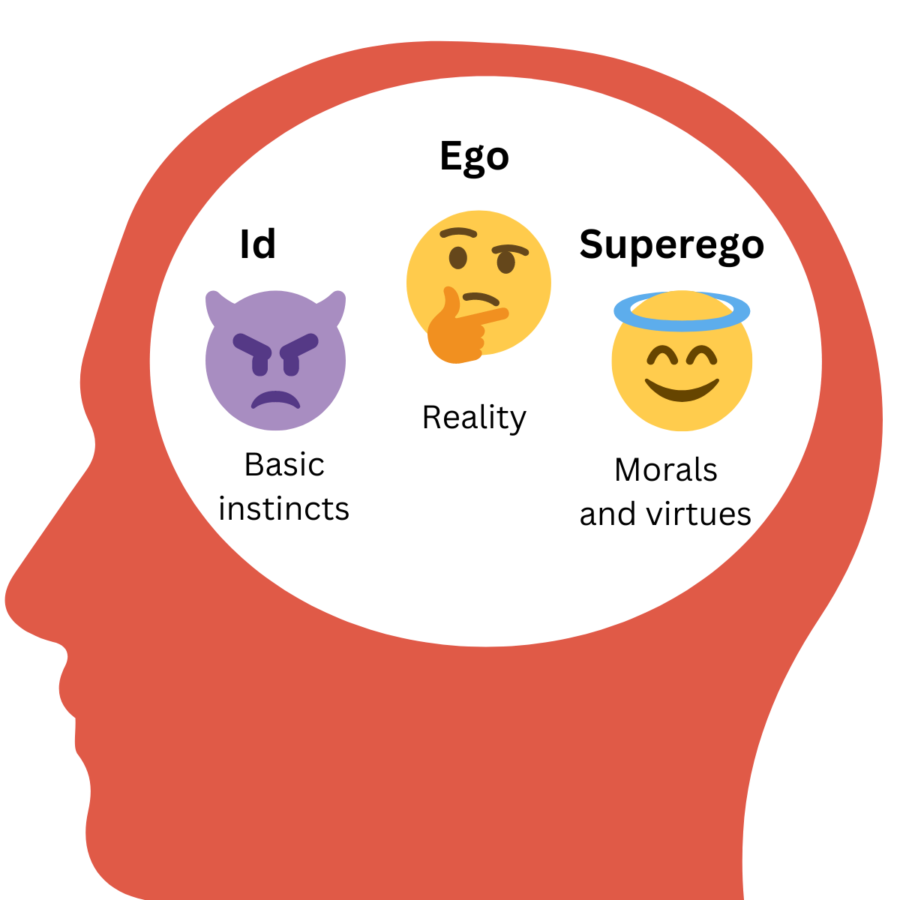ENGLISH-PSYCHOLOGY UNIT 2 (STRUCTURE OF MIND)
UNIT 2 : Structure of The mind (Structure of the mind):
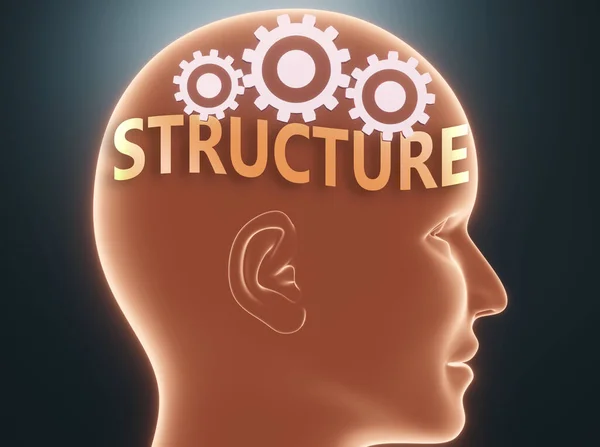
Elements of personality (Elements of Personality) :
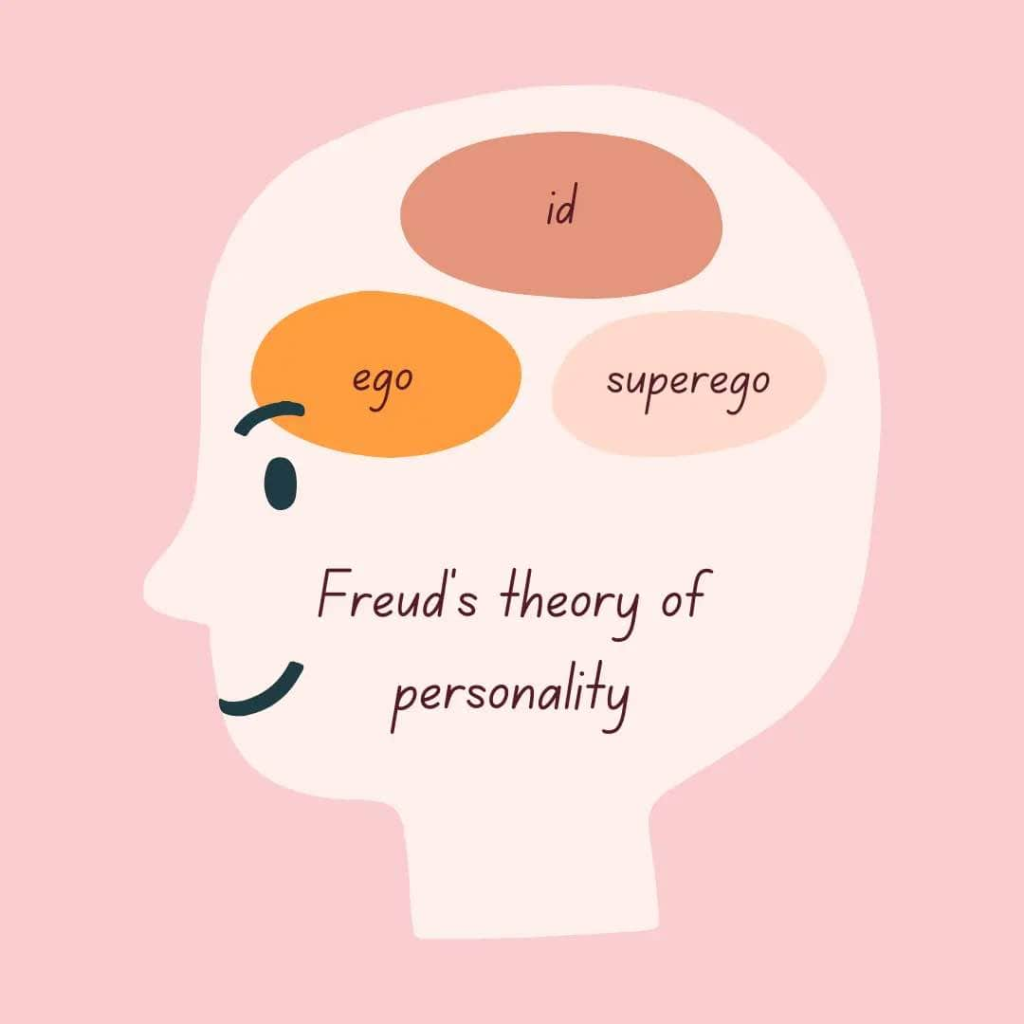
Sigmund Freud gave the psychoanalytic theory.
According to this theory, there are three main elements of personality: Id, ego and super ego.
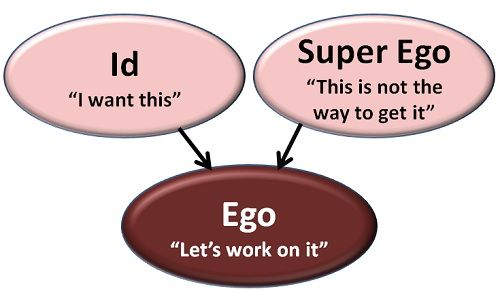
- The id, ego, and superego work together to create a complex behavior.
- Ed, ego, and superego are found in every person’s personality. But its level is different in everyone.
- Just as some people have more id, some people have more super ego.
- If there is a balance between id, ego and super ego, then the person has a good personality.
- If there is no balance between id, ego and super ego, then the person has a bad personality.
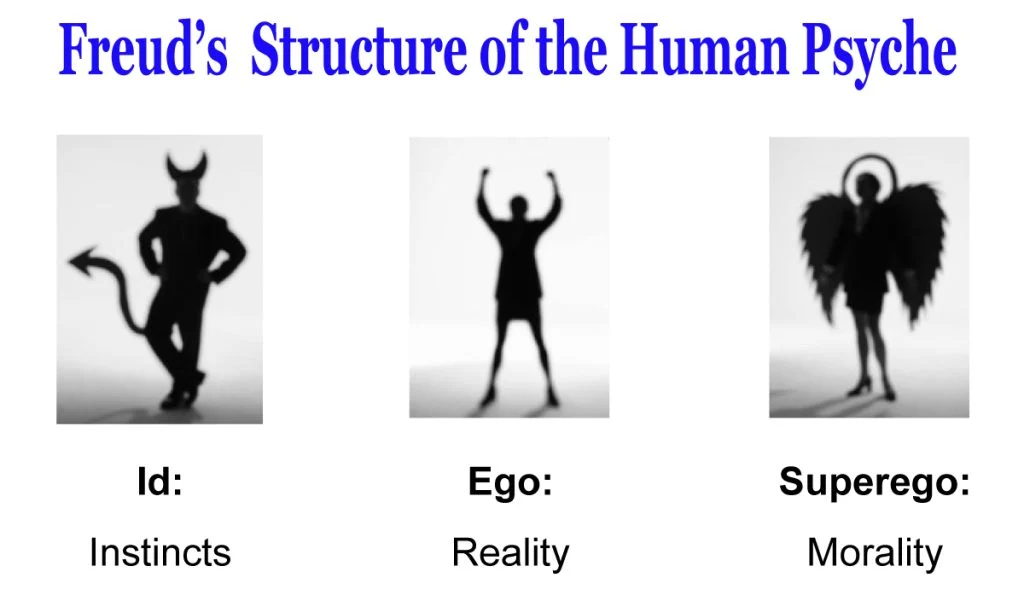
Id:
- Id is the primitive and instructive component of personality.
- Id is the impulsive and unconscious part of the mind.
- Id is the part of personality that causes needs and demands in a person.
- Id is present at birth.
- So when a child is born It does not have to be taught by insisting or making demands.
- The id works on the ‘pleasure principle’ . That is, every work that a person enjoys should be done.
- Id is totally unreasonable and unrealistic.
- In which his desires, needs and demands should be fulfilled immediately and he should experience immediate pleasure.
- If his desires and needs are not fulfilled immediately, then anxiety and tension are seen in him.
- However, it is not always possible to fulfill his needs and demands because his demands are not always realistic and possible.
- For example, a child who likes a toy wants that toy immediately. If the toy is not given to him, he will start crying and get angry.
- The sexual need, sexual desire (libido) and aggression that we see in him are due to the Id.
- People in whom the Id is more dominant use tobacco, alcohol and drugs more.
- If the Id of people in whom the Id is more dominant is not fulfilled, those people turn to crime and Has an antisocial personality.
Ego :
- The ego is the decision-making component of personality.
- The ego is the partially conscious part of the mind.
- The ego develops around the age of three. is.
- The ego works on the ‘reality principle’ .
- The ego works to maintain a balance between the Id and the super ego.
- The ego will fulfill the demands made by the Id if they are reasonable and socially acceptable.
- The ego will fulfill the demands made by the Id if they are reasonable and at the right time and place. If it is not reasonable, it will try to find another similar item that meets the identified demand.
For example, if a child insists on an Android phone, give him a toy phone and fulfill his demand. Because Android phones are harmful to children and due to the arrival of Android phones, children cannot concentrate on their studies. Therefore, instead of giving them Android phones, they are given toy phones.
- If a person has a strong ego, he becomes very stubborn in holding on to reality and is not ready to let go of rules and norms.
Super ego :
- The super ego is the part of the personality that provides guidance.
- The super ego is the fully conscious part of the mind.
- The super ego develops around the age of five.
- The super ego works on ‘moral principles’. It works on the rules and ethics taught by parents and society.
- The super ego is what we learn from others, such as the environment and society around us.
- Due to the super ego, a person becomes more understanding.
- For example, a student wants to buy an Android phone, but he avoids the idea of buying a phone because it will disrupt his studies.
- The super ego gives more importance to social values and ethics. He pays more attention to what society will think and what people will think.
- It works to suppress the unreasonable demands made by the Id and struggles to drive the ego to idealistic standards rather than realistic principles.
- Such a person experiences feelings of guilt and shame.
- The super ego is more common in adults.
- A person with a strong super ego is more sensitive and is more likely to suffer from depression, anxiety, and obsessive-compulsive disorder. is.
Levels of mind (Levels of Mind):
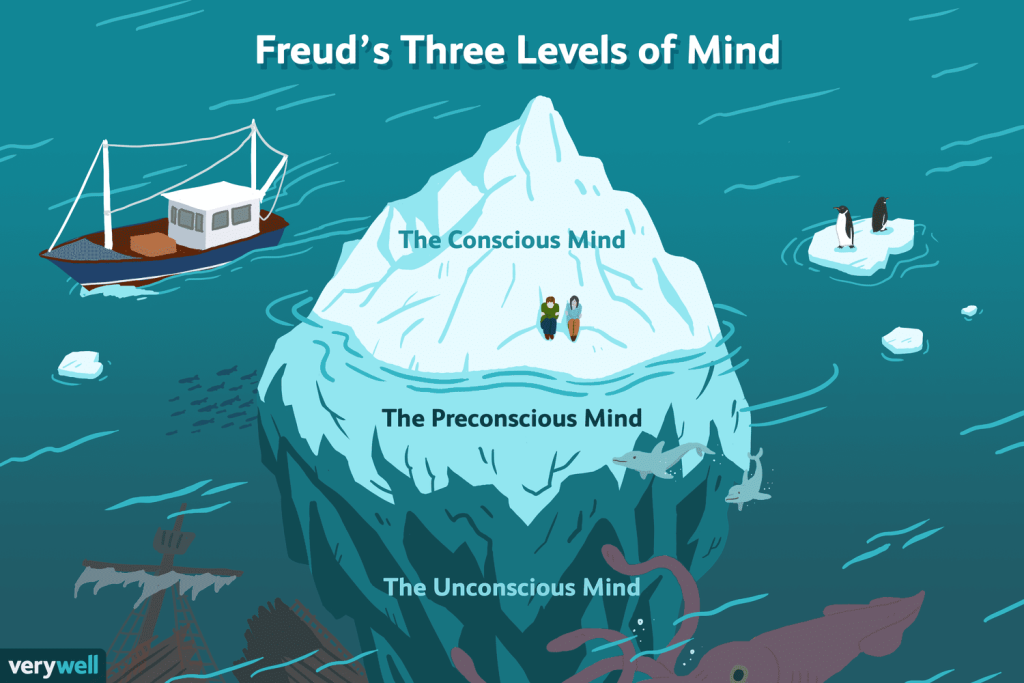
The mind is the part of a person that enables them to be aware of the world and their experiences, to think and feel.
Sigmund Freud said that our mind is made up of three levels: awareness and consciousness.
Sigmund Freud divided the structure of the mind into three levels:
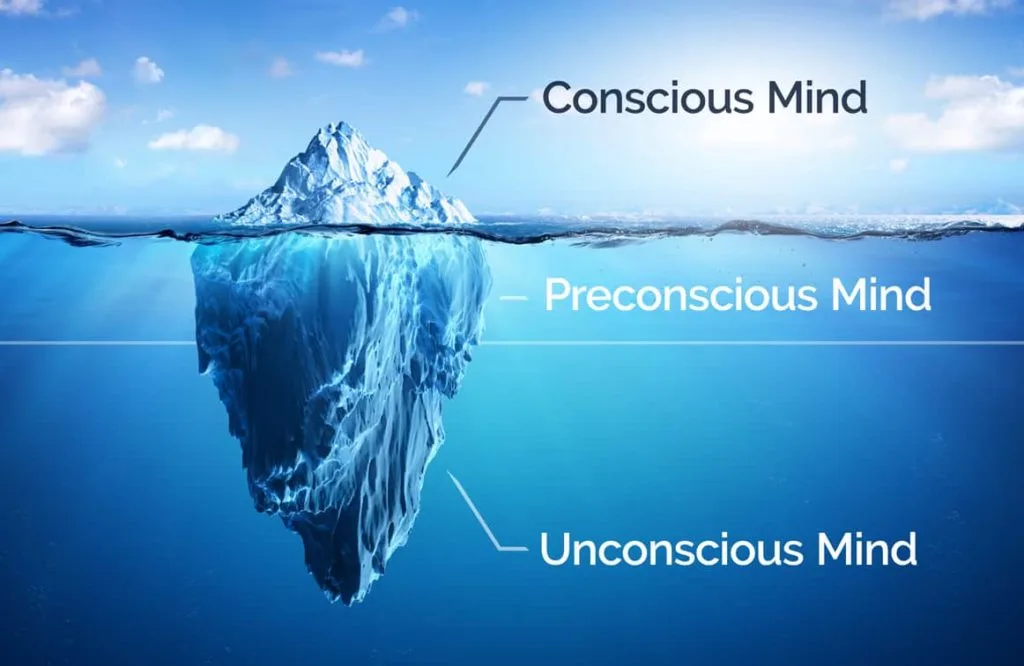
- Concious
- Subconscious
- Unconscious
Conscious mind:
- The conscious mind is The mind is the part of the mind in which the current state of the mind is remembered. That is, everything we do in the present acts as the conscious mind.
- For example, what we think or feel right now or what we do when we do anything acts as the conscious mind.
- If we are currently studying a psychology subject and thinking about it, then it is the
conscious mind. - The conscious mind acts as a scanner.
Subconscious mind :
- The subconscious mind is the part of the mind that stores recent memories for quick recall.
- It also remembers current information that we use in our daily lives such as behavior patterns, habits, and feelings, etc.
- These are facts that are stored in the mind but are not conscious. But when it is necessary to remember that thing, that thing is remembered.
- For example, what did you eat last night. We remember this but have to think about it a little, like what we had for dinner yesterday.
- The subconscious mind acts as a random access memory (RAM).
Unconscious mind:
- The unconscious mind is the part of the mind that stores our memories and experiences.
- These are our memories that have been repressed due to trauma or consciously forgotten memories that are not important to us.
- The unconscious mind acts as a store of the mind which stores all the old memories from birth till now.
- For example, we like something but due to its high price we cannot buy it and we remove the thought of it from our mind but it remains in the unconscious mind.
